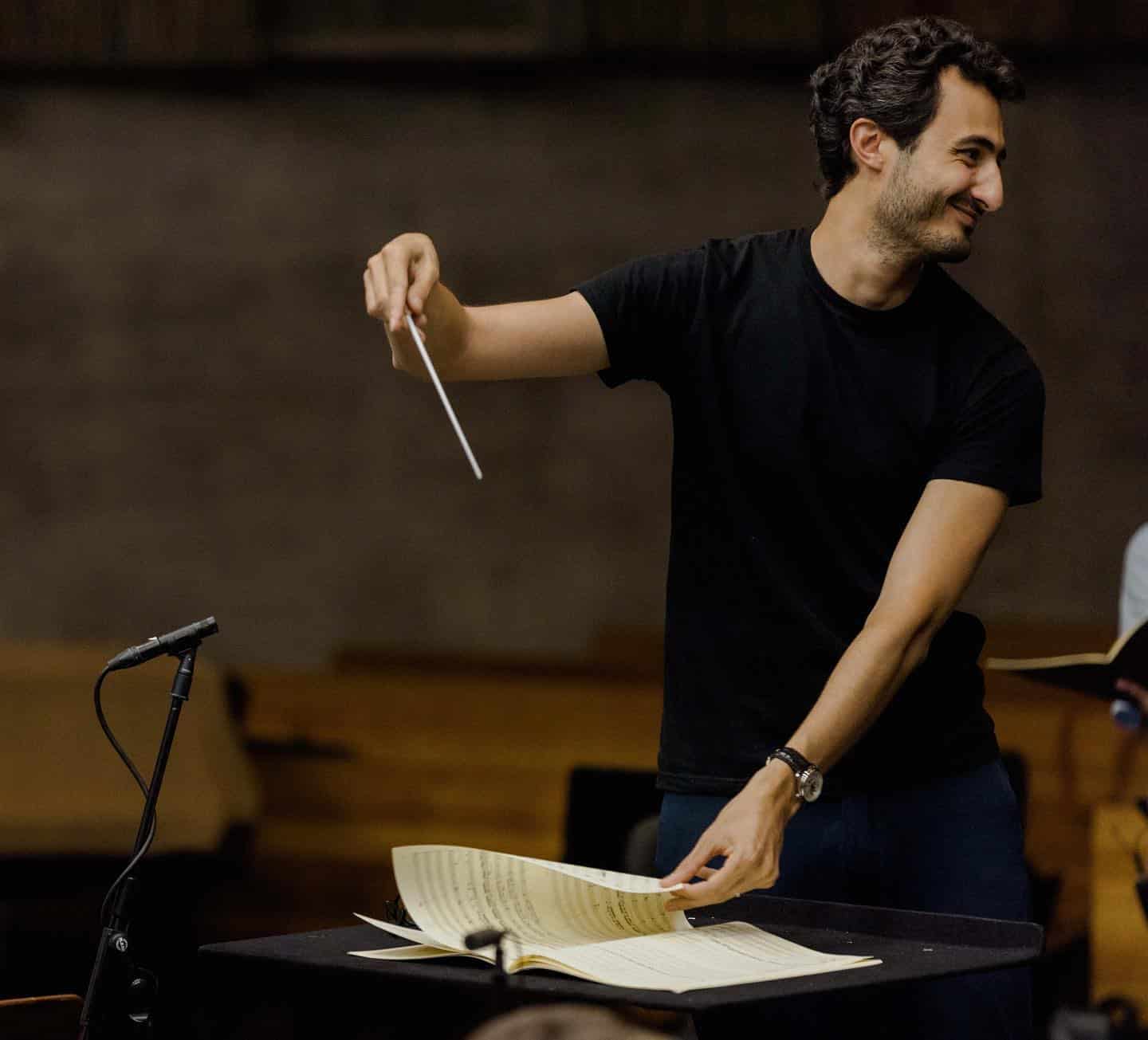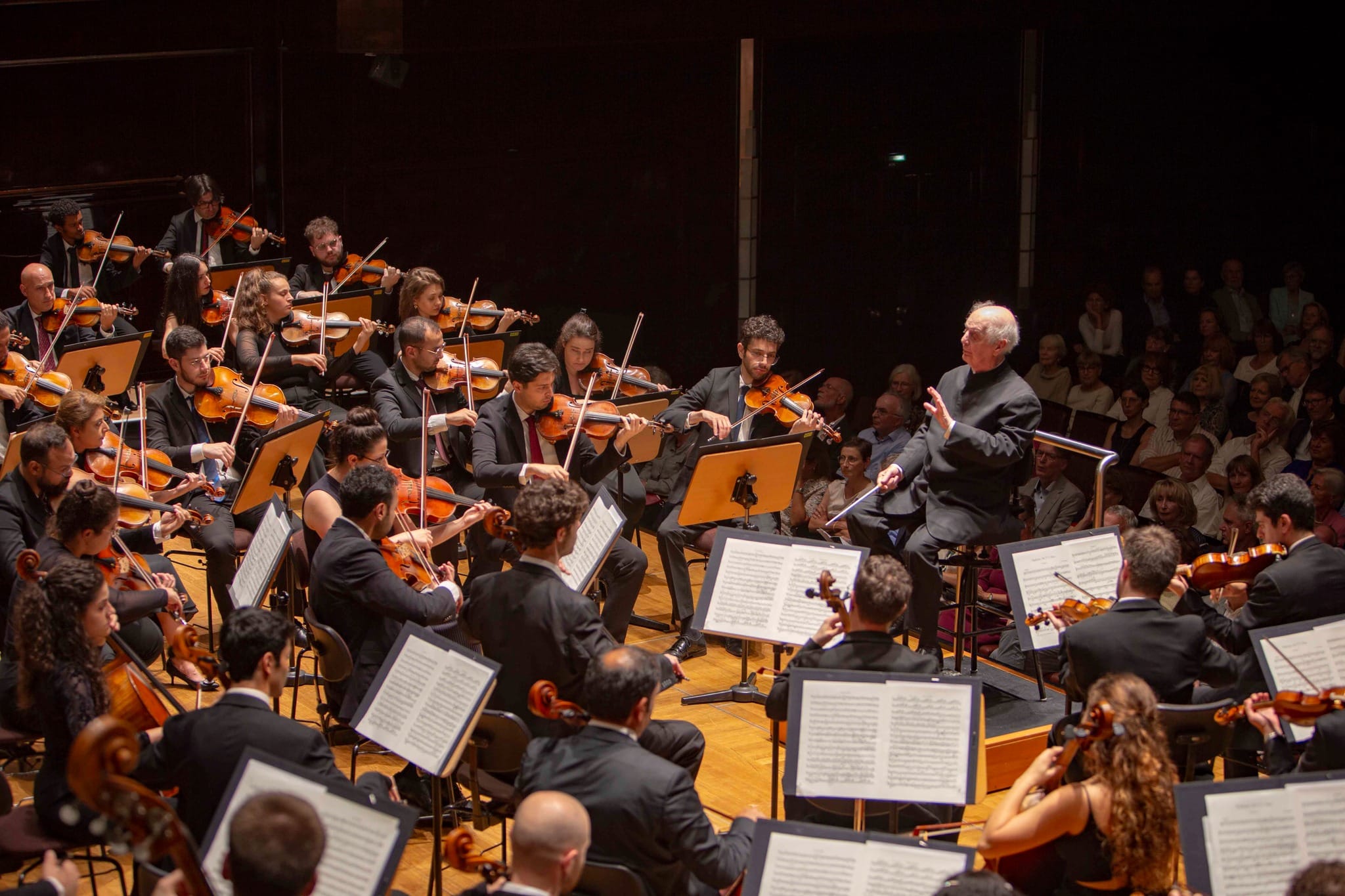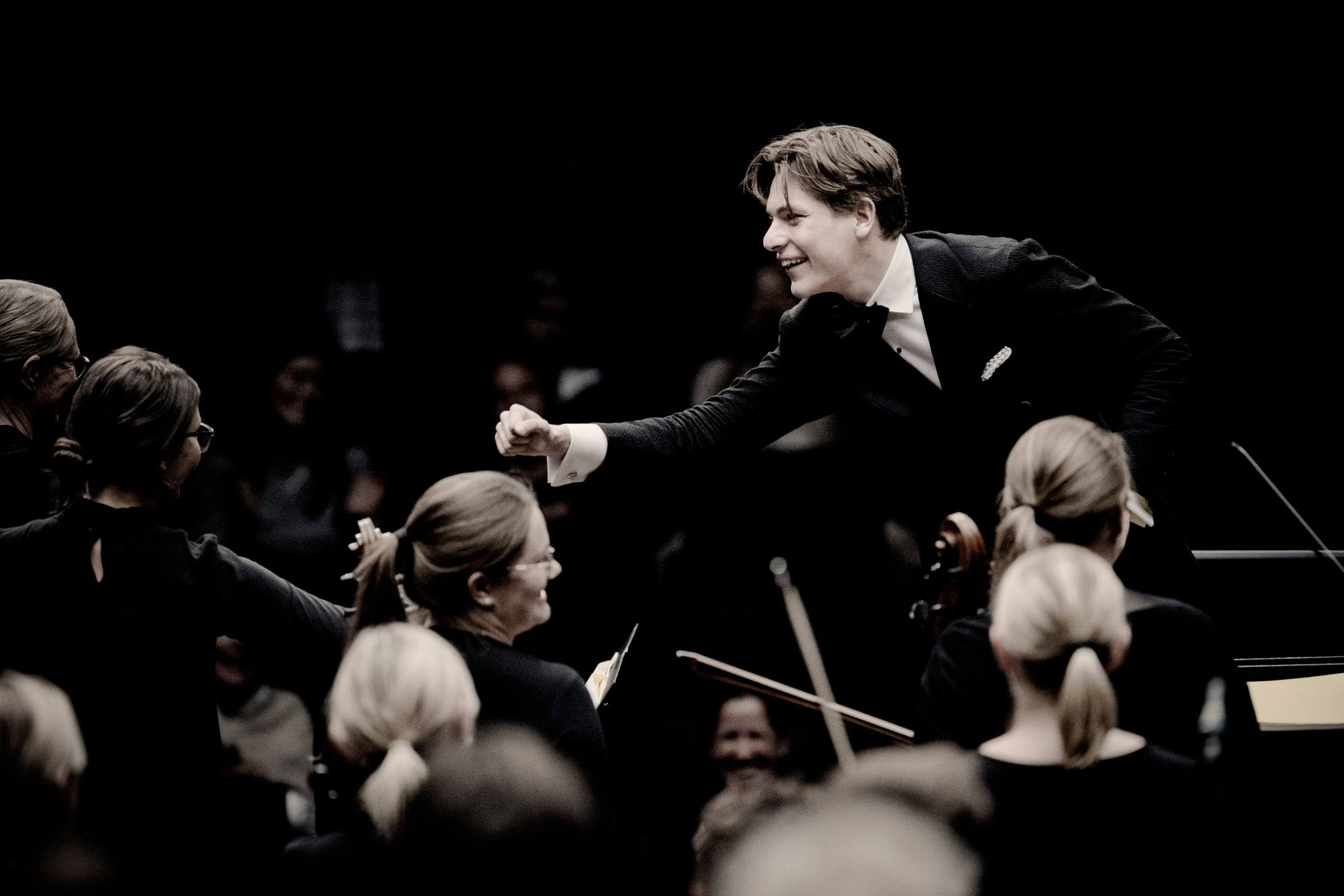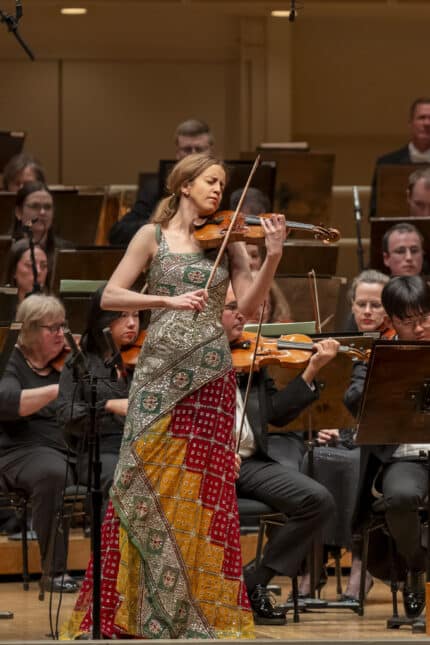Which Verdi opera?
main
A new production, a famous quartet… another clue?

Rigoletto, opened this week at the Salzburg Landestheater.

A new production, a famous quartet… another clue?

Rigoletto, opened this week at the Salzburg Landestheater.
Boston Symphony pulled one out of the fire…

The Berlin State Opera communicated tonight that its…

Zachary Woolfe, chief music critic of the New…

From Tim Sawyier on Chicago Classical Review: ……

Session expired
Please log in again. The login page will open in a new tab. After logging in you can close it and return to this page.
I don’t see the point in trying to judge a production on the basis of two photos.
Why not? These two photos show clearly that it’s not Rigoletto. It might be a masterpiece (not a very original one, BTW, since we have seen this stuff dozens of times), but it’s NOT the work it pretends to represent.
I see a father and a daughter spying on a man having some sort of romantic interlude with what looks like a tart. That’s the quartet from Rigoletto.
Then I see a group of masked youths and an older man, dressed comically, also masked. The mood seems tense and macabre. Obviously this is an entirely appropriate visual for the finale of the first act of Verdi’s opera.
What’s bothering you so much, a hankering to see doublets and farthingales?
And all four of the characters in the quartet are occupying the same space, which they should not be under any circumstances, because…?
Just the usual trolling from people who hate classical music and never go to operas anyhow.
They like to appear to have “opinions”.
You see a FATHER and a DAUGHTER ? How do you know?
You see them SPYING ? On people standing ten inches from them and, apparently, looking straight in the eyes of the “daughter”?
As for the “quartet” situation, for my money, it could be Fidelio (with Leonore as the tart, or whatever).
And the bottom picture could be just as well from Die Gezeichneten, or Ballo in maschera, or – whatever.
Because you have it both wrong. You know it’s Rigoletto, because Norman told you so. It shouldn’t be “OK, why not Rigoletto”, it should be “that’s Rigoletto, of course”.
But, of course, there is no “of course” anymore, at least not on stage, because in the orchestra pit and in the vocal cords the “of course” still rules.
I wonder why.
Thanks.
I haven’t laughed so much in weeks. Keep it up.
In that case, you really do need to get out more.
Let’s try that again without the formatting fail.
Leonore in Fidelio, whatever the period, is not a tart, and, more ot the point, she is supposed to be disguised as a man. A bra and a suspender belt is a very counterintuitive costume choice for male impersonation.
Of course, anything is possible, and nothing should be assumed to be nonsense until it is seen in context, unless, of course, one is an unimaginative pedant, in which case nothing is going to please you anyway.
You can take a slightly longer look at this production via a trailer at http://youtu.be/IfSYAeYqmNc — it is clearly a staging of Rigoletto, if maybe a little arty.
Get over it. Your pretty frock productions are not coming back. So you have the choice of joining the living world or else entombing yourself at home with recordings. If it’s the latter, I don’t see why the rest of us have to put up with your kvetching.
So the Sybil hath spoken. How do you know they’re not coming back? c.1950, nobody though it would be possible to take LUCIA seriously again, while operas like Maometto II, Mathilde di Shabran, Maria Stuarda, and most baroque opera were thought unrevivable dead letters. Twenty-thirty years before that Mozart was considered box office poison in most opera houses with only Don Giovanni having a tenuous hold on the public. Regular revivals of Idomeneo and Tito would have been considered a madman’s dream. Likewise regular presentations of Les Troyens.
Productions that respect the composer’s specifications of actions and period will always crop up from time to time.
And I am quite sure some Regie genius somewhere, someplace has already decided Leonore is a tart and a man disguised as a woman to boot; Pizarro a good guy and Florestan a bastard.
Your strawman argument is noted and snorted at.
But you don’t snort at but rather embrace the impossible and absurd directorial decision to stage the Rigoletto quartet with all participants occupying the the same space. Please defend that. Not even the Met’s Las Vegas production did that.
Any production which introduces implausibilities and absurdities that do not exist if the original setting and action are observed is scarcely valid. A few minor incongruities can be overlooked if they are compensated for when a director brings psychological or existential truth to the fore (e.g. Decker’s Salzburg/Met Traviata or McVicar’s Trovatore or the largely symbolic/abstract production I once saw in Seattle; Mark Lamos I think). But staging the Rigoletto quartet with all four characters in the same space is simple ignorance.
Well, I haven’t seen the production, so I can’t say how that particular bit of staging works. I will say that recently I saw a production of Angels in America directed by Ivo van Hove that used an almost completely bare stage, with scenes staged so that characters very much not in close proximity geographically (in some cases in different cities) were not only very close to each other onstage but in some cases touching and embracing.
So if the convention is established in a production that the space is not used in a realistic way, then I have no problem in principle with the lack of a physical wall in that scene. (Let’s remember that even when the scene is done in the traditional fashion, there is a convention at work, the notion that the half-wall shown on stage represents the complete side of a standing building.)
Answering both versions.
Of course, you didn’t answer my first and foremost: it shouldn’t be “OK, it might as well be Rigoletto”, it should be “of course, this IS Rigoletto”, just as you say “this is Rigoletto” after the first notes of the score.
Now to details.
The guy with a hunch could just as well be Alviano in Die Gezeichneten. Or Tonio in Pagliacci. Or just about anyone in any opera these people stage.
“Leonore in Fidelio, whatever the period, is not a tart, and, more ot the point, she is supposed to be disguised as a man. A bra and a suspender belt is a very counterintuitive costume choice for male impersonation.”
“Whatever the period”? Any reason for changing the period? I’m burning to learn what we gain by it.
If the court of Brabant can be full of laboratory rats, and Venus can be pregnant with Tannhäuser’s boy (both examples from Bayreuth, of course), then Leonore can be a tart, and the bra could just be Fidelio in drag. Whatever. Just ask La Cieca, he’ll explain it away for you – they always do, having all the words they need.
“Whatever”, let me add, is the magic word of these productions.
I know “the context”. The context is what Verdi wrote. This is nonsense within the context.
Otherwise, thanks a lot, even if it’s barely a surprise: the typical attempt at intimidation, the swift insults and the loud, ideological proclamations (rightly denounced by Brian) prove what, in fact, didn’t even need to be. Yours is not an “opinion”, but an ideological dogma. Without a wooden leg to stand on.
Your ex cathedra pronouncements are noted, then ignored.
It’s quite funny how the True Believers fear arguments, and facing ’em…
But Susan’s reaction proves, as usual, mine were pretty good. In this matter, it never gets better than that.
Let’s just go back close to 40 years. Just two photos, one withe a huge barrage and three women dressed as revue girls. The other one showing a man, dressed up in 19th century style, with a Foucault pendulum.
Headline by Norman Lebrecht: “Which Wagner work?” Comment by Gonout Backson: “These two photos show clearly that it’s not the Ring. It might be a masterpiece […], but it’s NOT the work it pretends to represent.”
So much for the most relevant Ring production of the last 60 years.
I rest my case: This Rigoletto production may be rubbish, it may be fair and intersting, it might even be a masterpiece (though I would be surprised, for masterpieces tend to be rare), but you can’t judge a production on the basis of two photos.
Yeah, yeah. Advocates of “Regietheater” have been using Chéreau’s Ring for forty years. Apparently, no other useful example has appeared ever since…
You forget two things (bis repetita placent):
Before his first rehearsal, Chéreau had been working for months with Boulez, he learned the piece almost by heart, and his production respects Wagner’s characters, situations and the whole story with manic precision. Even his Giants are “real”.
The Ring is about a fantastic world. Rigoletto is not. There are millions of ways to represent a fantastic world, to find, for instance, a striking, theatrical image to represent the Rhine.
That’s what Chéreau and Peduzzi did: they have shown us a world we have never seen before, and are still going back to see it again and again, forty years later, so powerful it is.
The nonsense we see on these Rigoletto photos – we have seen it hundreds of times under any possible title. There is nothing original there, just the rehashing of Regietheater clichés.
Not shocking : booooooring.
As I said before: This Rigoletto may well be rubbish, but simply by looking at these two photos we can’t judge. The same applies for judging the Chéreau Ring on the basis of two photos – they wouldn’t tell you about Chéreau’s working with Boulez.
And no, the fact that the Ring is set in a phantastic world doesn’t make the diefference: Neither is the setting in 16c Mantova essential for Rigoletto (I suppose you know the story about Verdi, censorship, Victor Hugo and King Francis I of France). If Rigoletto is only possible in Italian Renaissance costumes, then the Ring is only possible in horned helmets. And what about all these baroque operas set in Roman times that have nothing to do with historical reality?
My personal assumption is:
“Regietheater” productions: 60% rubbish, 30% inspring, 9% great, 1% masterpieces
“Tradtional” productions: 30% rubbish, 60% fair, but boring, 10% great.
But either way: On the basis of two photos you can’t tell.
I don’t agree, as previously stated : the Chéreau’s photos show me something I have never seen before. Literally : I’m old enough to have seen them in 1976 and remember my surprise and fascination.
These show me something I have seen a hundred times under many different titles.
There are plays/dramas (be they operas or not) that have something to do with the historical context, others who don’t. Nozze is nonsense in any other costume, Flute can have many, just as the Ring does.
I never said Rigoletto was “possible” only in 16th c Mantova, even if I still don’t get what we gain by putting it “somewhen” else.
It’s not just the costumes that tells me this Rigoletto is nonsense (even if the first argument holds: yaaaaawn), it’s also the situation mentioned above, a pretty obvious one, and (theatrically speaking) quite realistic. The two caracters on the right shouldn’t be seeing the two caracters on the left. Whatever the costume, this is precisely what Verdi wrote. The director, apparently, doesn’t care. Sorry, but my immediate reaction : been there, done that, yaaaaaaawn.
Could you, please, give me your titles of the 1% of masterpieces of Regietheater? Hopefully, I have seen at least some of them. It would help to have some hard examples here.
Opera is actually not a photographic art; that is, you can get only a vague hint of what a production means by glancing at a few still images. Do you ever even go to the theater? What was the last opera production you actually saw and hear in an opera house?
Apparently, you’re much more apt than me to see things in photographs, since you have seen in this one that the two persons on the left were father and daughter…
As for your question – you got me. I have indeed, after half a lifetime spent in theaters, been avoiding live productions for some time. The blatant contradiction between what I hear, and what I see, not to speak of the platitude, stupidity, vulgarity and ignorance in the worst cases, has grown unbearable.
You’re like a cracked record of music we never liked in the first place.
Nothing personal against Simon S. or Susan Trexel – but same impression here. The True Believers have a dozen arguments. You can shoot any of them down a hundred times, and God knows they’re easy to kill, but they’re like zombies: they never die. They’re even worse than zombies: yes, they were dead in the first place, but, with zombies, there’s a way. No way with these, since there’s always someone to pick them up and make them walk again…
One day you’ll substitute convincing argument for vacuous invective.
Maybe.
For years have I been using arguments against the True Believers of Regietheater. There are some juicy ones in this very exchange. Never heard any valid ones in return.
Unless you think that “you’re a cracked record”, “vacuous invective” and “I haven’t laughed so much in weeks” – answer any of the points I have been making.
I particularly like your argument that those who do not agree with your artistic opinions should be killed.
Here’s a more recent example: Calixto Bieito’s production of Parsifal in Stuttgart a couple of years ago. When it was over I realized that up until then I really had had no idea what the opera was about, and now it suddenly made sense. And it was not a dry intellectual exercise by any means: the whole show was a presentation of the most extreme human suffering, presented with a realism and honesty that made it physically uncomfortable to watch.
Or that Lohengrin you so blithely sneer at: a great theatrical experience that, a year later still haunts me.
Most art is crap, so it follows that most opera productions are going to be crap. It’s hard to tell from close up what art will stand the test of time, but it’s impossible when your insist on thinking in the most wooden and inflexible terms. But it’s your loss, and I’m sorry for you.
Art is never crap. Certain interpretative feculences are. Regi-Theater under Felsenstein and his adepts like Götz Friedrich, Joachim Herz, Ruth Berghaus and Harry Kupfer did thoughtful and imaginative interpretations. Now, usually, the ear and the eye are disconnected when a preposterous reinterpretation needs to envisage a directors own mental distortions, political and sexual frustrations. Theater as Ersatz-Psychoanalysis. The theater managers don’t give a damn, as long as they sell tickets and people go to the theater for the sake of the scandal. It’s ordinary betrayal. By the way, Chéreau was a true visionary of his very own, and indeed a genius. In the best of cases, he’s had a bunch of imitators. In the worst of cases, you have Bieitos et consortis asking mostly female singers to look like pornstars, furnicating, urinating and defecating on stage. And since you can’t ask operastars to do that, you take young, mostly untested career-hungry singers who won’t complain. Summa summarum: the artform dies. Punkt schluss.
What do you want me to say? So, apparently, there are people who need Calixto Bieito to get what Parsifal is about, and to see rats in Lohengrin to live a theatrical experience.
Whoopee for them.
I take it, then, you haven’t seen the production. So really there’s nothing to discuss. You mind is closed, which is a pity, but anyone who’s going to dismiss a work of art he’s never even seen is hardly going to be persuaded by argument.
I’m looking forward to more of your music reviews based on two tiny photographs of the event.
Has anyone ever staged a Rigoletto production with Hugo’s original setting of Francis I? Verdi would have followed suit had it not been for the censorship.
I’m afraid we’ll much sooner see it with François Hollande (“Questa o quella?”), than with François Ier…
I don’t see that this makes sense. Verdi set a libretto about a Duke in Mantua and his court, not a royal court in Paris. In other words, what he created was an adaptation of the Hugo, not a failed attempt at a copy. One might as well take Rodgers and Hammerstein’s Carousel and “restore” it to is “original” setting in Budapest.
You see the Duke of Mantua and his court in the photos above?
No one asks for a return to Francois Ier. No one asks for a Traviata “in Richelieu’s times”, as it was originally done for the same censorship reasons. But they would make more sense this way than the umpteenth Traviata turned into Marilyn Monroe and dying of aids (I bet someone is giving her Ebola even as we speak).
More straw men. You don’t go to the opera, do you?
I have answered that already (apparently you didn’t even notice).
Fine. It’s established, then, that you’re bitter and ignorant, so there’s no more need of discussion.
Look, some “artists” exhibit paintings made out of human excrement. No matter how you look at the “composition”, the “form” or “structure” or even the “meaning”, summa summarum, crap will still be crap. Unfortunately, it is often the same in the lyrical theater.
You are wrong and ignorant. Verdi no more set Rigoletto in 16th century Mantua than he set Ballo in Maschera in 17th century Boston. Only the censorship demanded the changes from what Verdi had already composed. That is why Sparafucile still says he’s Burgundian instead of, say, Bolognese.
The only point of my question was if you are going to be “different” it might be illuminating to see and hear the opera in the setting with the characters Verdi originally composed; just as we have seen Ballo put back in Sweden with the assassination of Gustave III.
I think Verdi set by far the largest part of Rigoletto to the revised version of the libretto, though he certainly was sketching the music during the period when the opera was still set in France and retitled La maledizione. So “the characters Verdi originally composed” in this case are Rigoletto, Gilda, the Duca di Mantova and so forth.
A stronger argument can be made for “returning” Un ballo in maschera to the Swedish court since the opera was virtually complete before the censorship forced the change of setting. I don’t care for the argument based on “intention,” though, because it’s very difficult to determine precisely what Verdi wanted. Ballo had a long career of revival during the composer’s lifetime, and we have no record of his requesting that it be set in Sweden. From that it is not implausible to conclude that although the first intention was to set the story of Gustavus III, Verdi was satisfied with his opera about the fictional colonial governor of Boston.
For my part, I think the “Mantua” setting for Rigoletto actually is more plausible than the “Paris,” in that a duke would likely have more luck going out incognito than a king. (A simllar logical flaw marred the recent Met production, i.e., if the “Duke” character were indeed a celebrated pop singer and recording star a la Frank Sinatra, he would have a lot of trouble prowling around Las Vegas unrecognized.)
One plot detail in Ballo, incidentally, sounds like nonsense in the “Swedish” setting. In the introduction to this third act aria, Riccardo sings
.Ah sì, Renato rivedrà l’Inghilterra…
e là sua sposa lo seguirà.
Senza un addio,
l’immenso ocean ne separi…
Even with the touch-up of “la sua patria” for “l’Inghilterra,” this is nonsense coming from the mouth of the Swedish king. Anckarström is Swedish, so “his fatherland” is Sweden. Even if he is sent away from court, there is no “immense ocean” to separate Gustavus from Amelia and, by extension, no such overwhelming motivation to see her one last time at the ball.
Wrong again. The text you cite is not what Verdi set in his “Swedish” text (Somma by way of Scribe). . The actual lines are “Ebben da questa Corte lungi/E ad altro incarco il Conte eleggo…ed ella/Lo seguiro domani.” (Well then, far from this Court and on a new assignment I send the Count, and she will follow him tomorrow.) Pefectly logical. You simply need to get producers to pay attention and ask tenors to sing the right text instead of obsessing about conspirators reading newspapers while sitting on toilets in the men’s loo.
What you are describing is a reconstructed version of Gustavo III based on the incomplete existing materials, not Un ballo in maschera. The line as I quoted it is the standard variant in the libretto as it is performed worldwide year after year.
It certainly should be the privilege of a conductor and director to interpolate fragments of the Gustavo III libretto into the version of Un ballo in maschera used in a particular production. But it’s nonsense to claim that the line you quote is the text Verdi set for Ballo. It is not. It is text he set for an abandoned opera, much material from which he later reused to create the completed and definitive work Un ballo in maschera.
And can we please let the Bieito Ballo production (of which the “toilets” scene was only a minor aspect) die already? That was in 2001, for heaven’s sake, so constantly bringing it up is like arguing about the current state of cinema using Bridget Jones’s Diary, Amélie and Moulin Rouge as your talking points.
@Susan Trexel
“I particularly like your argument that those who do not agree with your artistic opinions should be killed.”
Just in case anyone got the same, surprisin impression : I wasn’t talking about the True Believers, but about their “dozen arguments” that are easy to kill, but, no matter how many times you shoot them, they always get up and walk again.
As i seem to be the only one here, who has seen the whole production and not just one photo, i am obviously the only one who really can tell, what this scene is about: in my opinion the director has found here a clever and interesting way to show, that these four people are linked with each other in a very strong way in this opera. As the four stand together and hold each other (once Duca holds Maddalena, then Gilda holds Duca, then Rigoletto holds Gilda and so on) this quartet is becoming some kind of a dream, a moment out of time and space, in which the fateful connection of these four is shown in one picture. A really clever way to stage it!